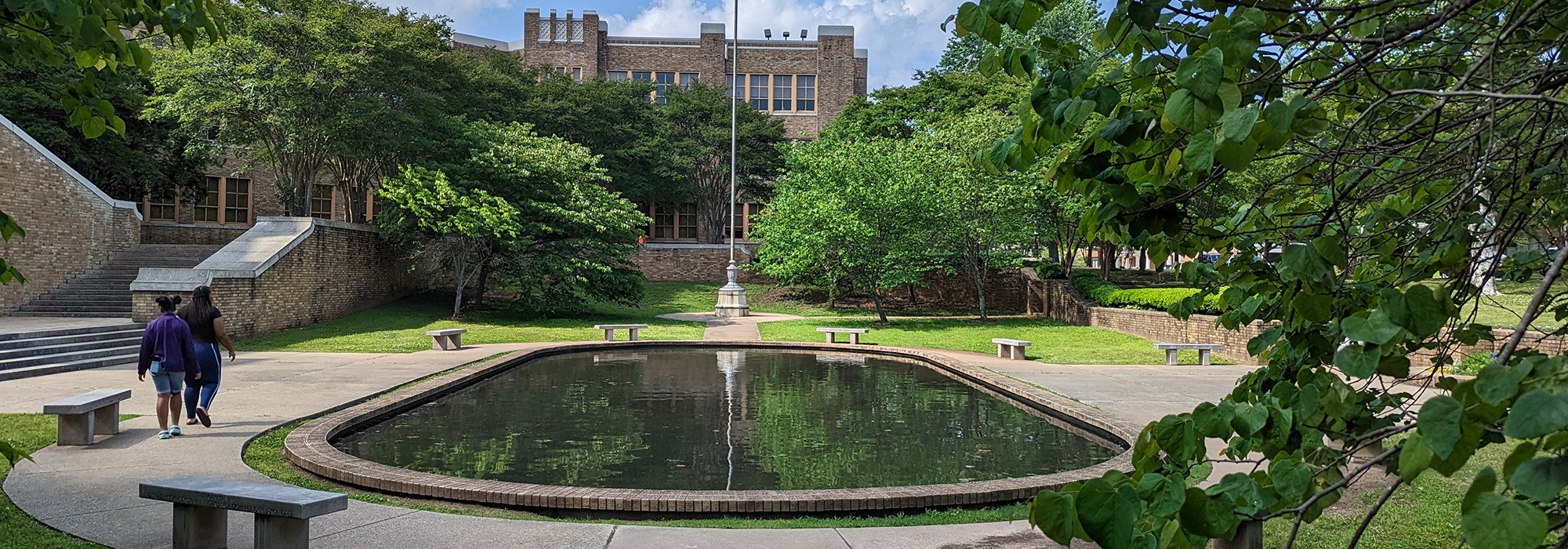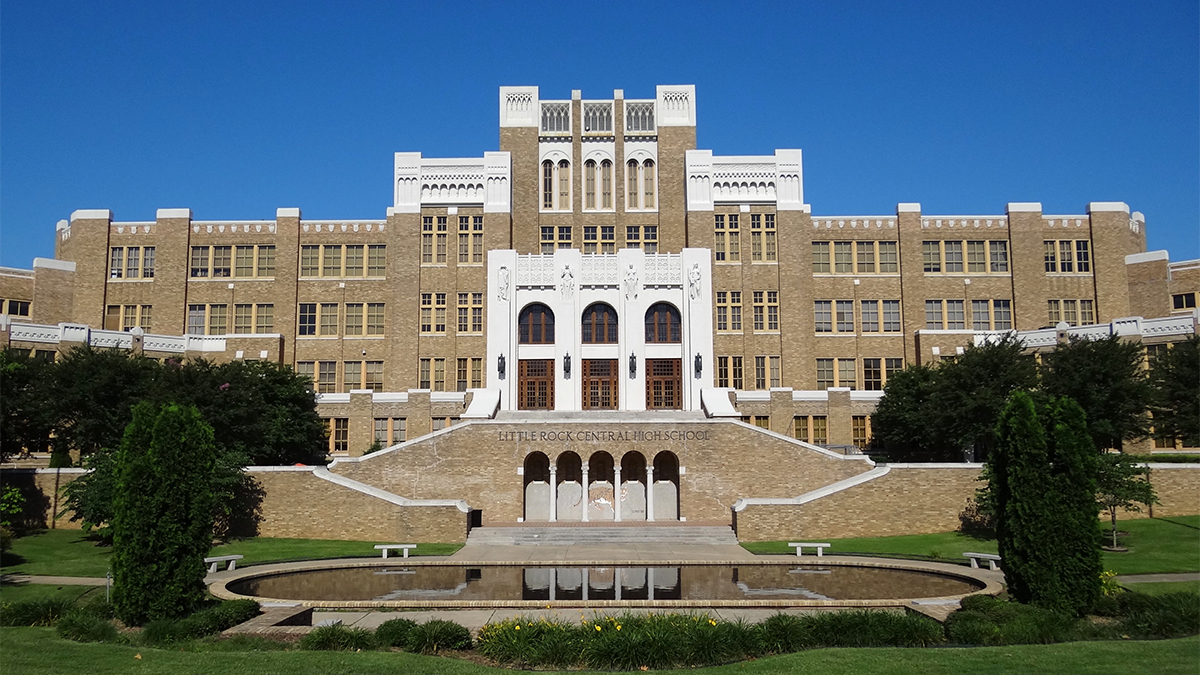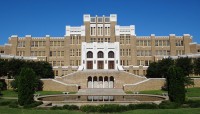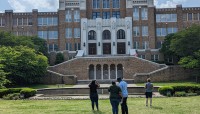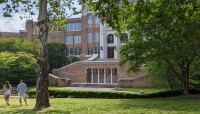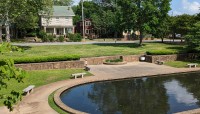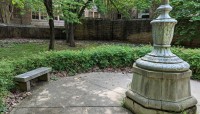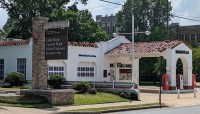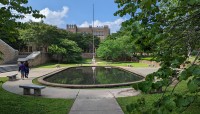Landscape Information
This 28-acre site, located in a residential neighborhood southwest of downtown, includes an approximately 21-acre public high-school campus. The campus is dominated by a Neo-Gothic Revival and Art-Deco structure designed by local architects George Mann, Eugene Stern, John Almand, George Wittenberg, and Lawson Delony. The grounds were concurrently designed by landscape architect John Highberger.
The school is accessed by symmetrical staircases that ascend terraced landings. A receded, arched colonnade supports the central terrace and fronts a sunken plaza that includes an oval reflecting pool, framed by paths, and flanked by symmetrical flagpoles. East of the plaza, a lawn, interspersed with shade and flowering trees, rises to meet South Park Street. The western portion of the campus includes a stadium erected by the Work Progress Administration in 1937.
In 1957, three years after the U.S. Supreme Court determined the segregation of public schools to be unconstitutional, nine African American students attempted to enter the high school. Their denied entry into the school drew national attention and President Eisenhower sent federal troops to escort the students, referred to as the Little Rock Nine.
Today a half-acre commemorative garden (2001) is located immediately north of the campus, which continues to serve as a public high school. The garden includes a mounded lawn and a curvilinear path edged by nine commemorative benches and maple trees that honor the Little Rock Nine. The path leads to a brick pavilion embellished with a sculpture, “Transcendence,” by Michael Warrick and Aaron Hussey.
The Little Rock Central High School was listed in the National Register of Historic Places in 1977 and was designated a National Historic Landmark in 1982 for its significance as a “symbol of the end of racially segregated public schools in America.” The park is a part of the African American Civil Rights Network.



